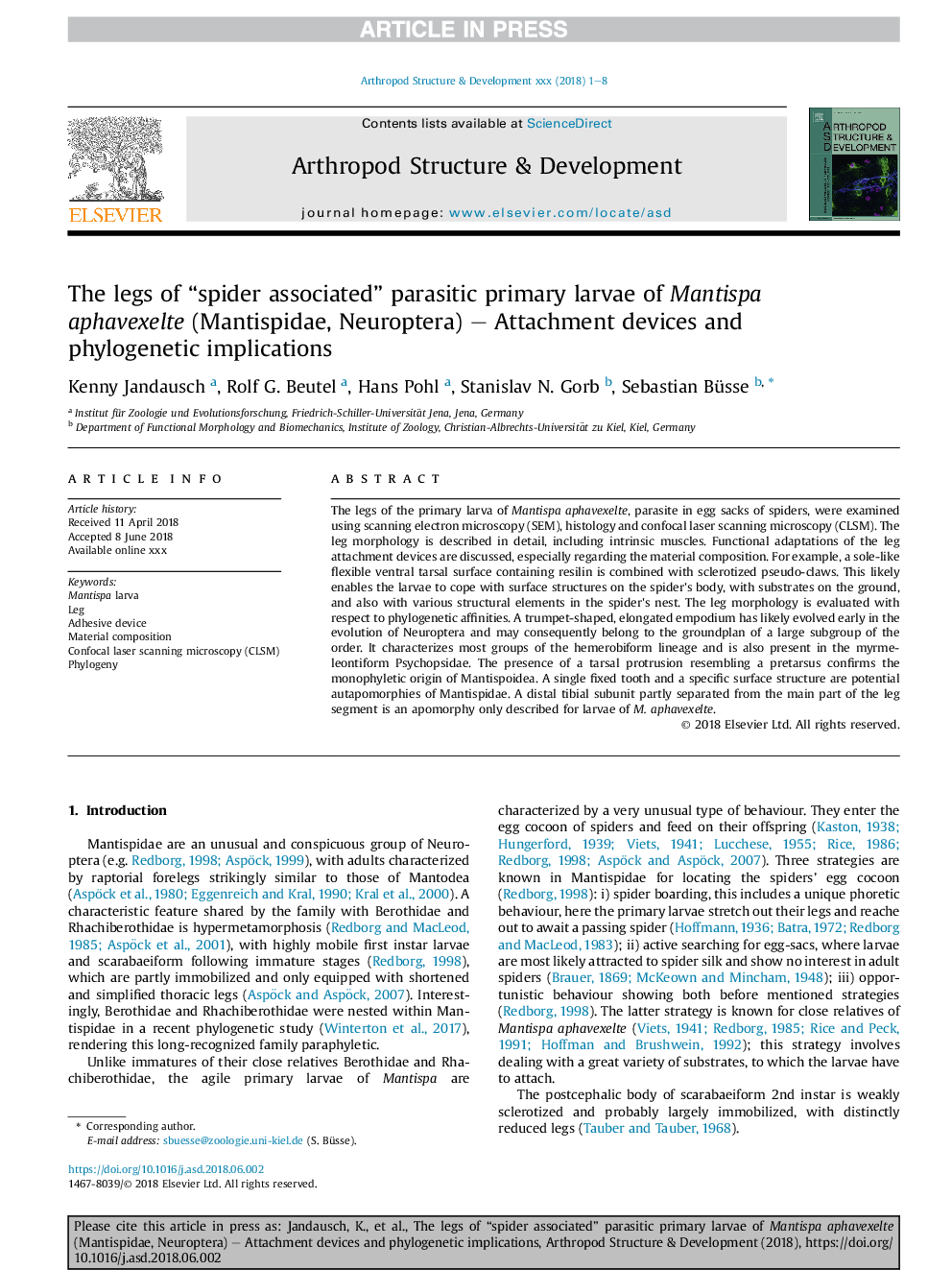| Article ID | Journal | Published Year | Pages | File Type |
|---|---|---|---|---|
| 10212216 | Arthropod Structure & Development | 2018 | 8 Pages |
Abstract
The legs of the primary larva of Mantispa aphavexelte, parasite in egg sacks of spiders, were examined using scanning electron microscopy (SEM), histology and confocal laser scanning microscopy (CLSM). The leg morphology is described in detail, including intrinsic muscles. Functional adaptations of the leg attachment devices are discussed, especially regarding the material composition. For example, a sole-like flexible ventral tarsal surface containing resilin is combined with sclerotized pseudo-claws. This likely enables the larvae to cope with surface structures on the spider's body, with substrates on the ground, and also with various structural elements in the spider's nest. The leg morphology is evaluated with respect to phylogenetic affinities. A trumpet-shaped, elongated empodium has likely evolved early in the evolution of Neuroptera and may consequently belong to the groundplan of a large subgroup of the order. It characterizes most groups of the hemerobiform lineage and is also present in the myrmeleontiform Psychopsidae. The presence of a tarsal protrusion resembling a pretarsus confirms the monophyletic origin of Mantispoidea. A single fixed tooth and a specific surface structure are potential autapomorphies of Mantispidae. A distal tibial subunit partly separated from the main part of the leg segment is an apomorphy only described for larvae of M. aphavexelte.
Related Topics
Life Sciences
Agricultural and Biological Sciences
Insect Science
Authors
Kenny Jandausch, Rolf G. Beutel, Hans Pohl, Stanislav N. Gorb, Sebastian Büsse,
